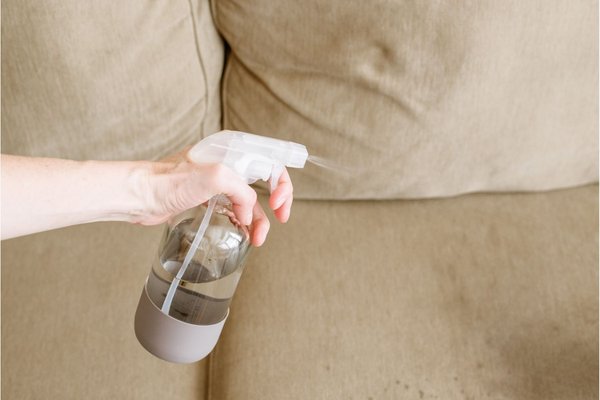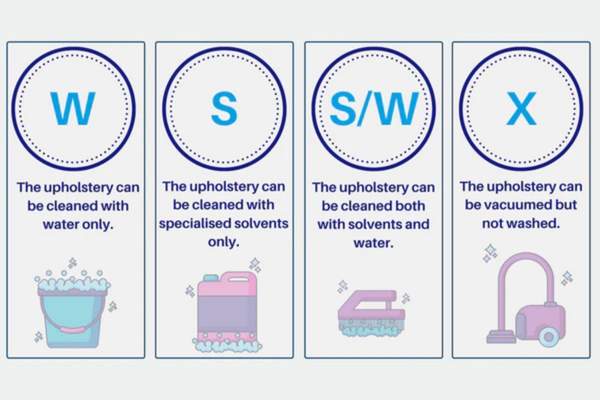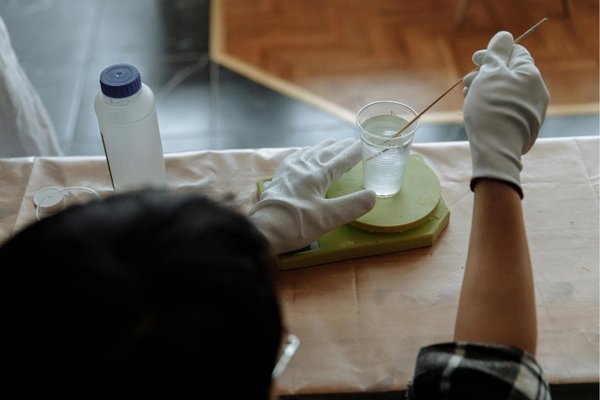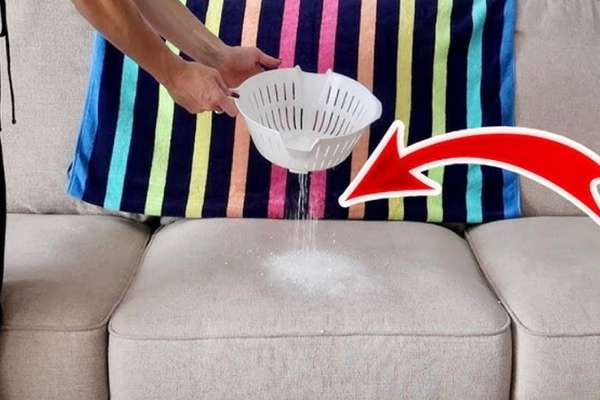Your sofa is more than just a place to sit; it’s often the heart of your home’s living space, where family and friends gather, watch movies, and relax. Over time, however, it can accumulate dust, stains, and even odors. Using vinegar is one of the most effective and affordable ways to clean your sofa without harsh chemicals. This article will guide you through how to use vinegar to clean, refresh, and maintain your sofa, leaving it spotless and inviting.
Why Use Vinegar to Clean Your Sofa?

White vinegar is a natural cleaner with powerful abilities to cut through dirt, dissolve stains, and neutralize odors. It’s also nontoxic, eco friendly, and safe for use around kids and pets. When used properly, vinegar can help you maintain a clean, fresh smelling sofa without damaging the fabric.
Vinegar is also incredibly versatile: it works well on many types of upholstery fabrics, including cotton, microfiber, and some synthetics. However, as with any cleaning solution, it’s essential to test it on a small, hidden area first.
What You’ll Need to Clean Your Sofa with Vinegar
Before you begin, gather the following supplies:
- White distilled vinegar
- Warm water
- A spray bottle
- A soft cloth or microfiber towel
- Baking soda (optional, for tough stains and odors)
- Dish soap (optional, for deep stains)
- A vacuum cleaner with an upholstery attachment
- Essential oil (optional, for added freshness)
StepbyStep Guide to Cleaning a Sofa with Vinegar
Step 1: Check Your Sofa’s Cleaning Code

Before you start, locate the cleaning code on your sofa’s tag. This tag, usually under the cushions or on the frame, tells you what cleaning methods are safe to use on your sofa fabric. The most common codes are:
- W: Water Based cleaning is safe.
- S: Solventonly cleaning (no water).
- WS: Either water or solvent based cleaners can be used.
- X: Vacuum only (no liquid cleaners).
Vinegar works well on fabrics labeled Wor WS. If your sofa is labeled Sor X, avoid using vinegar or any water based cleaner.
Step 2: Prepare Your Vinegar Solution

Once you’ve confirmed that vinegar is safe to use on your sofa, it’s time to prepare your cleaning solution:
- In a spray bottle, mix equal parts white distilled vinegar and warm water.
- For a pleasant scent, add a few drops of essential oil (like lavender, tea tree, or lemon). This step is optional but can help mask the smell of vinegar.
Step 3: Test the Solution on a Hidden Spot
Always test your vinegar solution on a hidden part of the sofa (like the back or bottom of a cushion). Spray a small amount, wait 1015 minutes, and check for any discoloration or texture changes. If everything looks good, you’re ready to proceed!
Step 4: Vacuum the Sofa

Before applying the vinegar solution, vacuum the sofa to remove loose dirt, dust, and pet hair. Use a vacuum cleaner with an upholstery attachment for best results. This step ensures you won’t push dirt deeper into the fabric when cleaning.
Step 5: Apply the Vinegar Solution to Stains

- Lightly spray the vinegar solution onto the stained or dirty areas of the sofa. Avoid soaking the fabric, as too much moisture can damage upholstery and lead to mold growth.
- Gently blot the area with a soft cloth or microfiber towel. Avoid scrubbing, as this can spread the stain or wear down the fabric.
- For stains, let the vinegar solution sit for 510 minutes before blotting. This allows the vinegar to break down tough stains.
Step 6: Rinse with Clean Water
After treating stains with the vinegar solution, dampen a clean cloth with plain water (not soaking) and blot the areas you cleaned. This step helps remove any residual vinegar, ensuring that the sofa won’t have a strong vinegar odor.
Step 7: Let the Sofa Air Dry
Allow your sofa to air dry completely before using it again. You can speed up the drying process by opening windows or using a fan. Be sure the sofa is fully dry to prevent any residual moisture from causing mildew or musty odors.
How to Tackle Tough Stains with Vinegar and Baking Soda

For tougher stains, the combination of vinegar and baking soda can work wonders. Here’s how to use these powerful natural cleaners together:
- Sprinkle Baking Soda: First, sprinkle a generous layer of baking soda over the stained area and let it sit for 1520 minutes. Baking soda absorbs odors and loosens grime.
- Vacuum Up Baking Soda: Use a vacuum cleaner to remove the baking soda.
- Apply Vinegar Solution: Spray the vinegar solution lightly over the area where you applied the baking soda.
- Blot the Area: Blot the area with a soft cloth, lifting any remaining stain.
This method is effective for deep seated stains and especially helpful for refreshing your sofa.
Additional Tips for Sofa Maintenance with Vinegar
- Routine Cleaning: In addition to spot cleaning, it’s beneficial to give your sofa a light cleaning every few months. Simply spray a vinegar solution lightly over the entire sofa and wipe it down with a clean, damp cloth to keep it looking fresh.
- Tackle Odors Regularly: If your sofa tends to hold onto odors, sprinkle baking soda on it once a month and vacuum it up. For particularly stubborn smells, you can use a vinegar solution as well.
- Avoid OverSaturating the Fabric: When cleaning with vinegar or any liquid, be cautious not to oversaturate the fabric, as this can lead to mildew or mold growth.
- Use Throw Blankets and Cushion Covers: Protecting your sofa with washable covers or throws can help keep it clean and reduce the frequency of deep cleaning.
Frequently Asked Questions
Can vinegar damage my sofa?
Vinegar is safe for most upholstery fabrics but can damage delicate materials like silk or velvet. Always check the fabric’s cleaning code and perform a patch test to be sure it’s safe for your specific sofa.
Will my sofa smell like vinegar?
The vinegar smell should fade as the sofa dries. If you’re sensitive to the scent, you can rinse the sofa with water after cleaning or add a few drops of essential oil to the vinegar solution.
Can I use vinegar on a leather sofa?
For leather, it’s best to use a cleaner specifically formulated for leather. Vinegar can dry out leather if not used with caution. If you choose to use vinegar on leather, dilute it heavily and follow up with a leather conditioner to restore moisture.
How often should I clean my sofa?
It’s a good idea to deep clean your sofa every 36 months, depending on use. Regular vacuuming and spot treatment can keep it looking fresh between deep cleans.
Final Thoughts: Enjoy a Clean and Fresh Sofa with Vinegar
Cleaning your sofa with vinegar is a simple, natural, and effective method to keep it looking and smelling fresh. By following these steps and taking a few preventive measures, you can maintain your sofa’s appearance and extend its life without the need for harsh chemicals or expensive cleaning solutions. Try these vinegar based cleaning methods, and you’ll enjoy a sofa that’s always ready for relaxing, hosting guests, or just unwinding at the end of the day.
